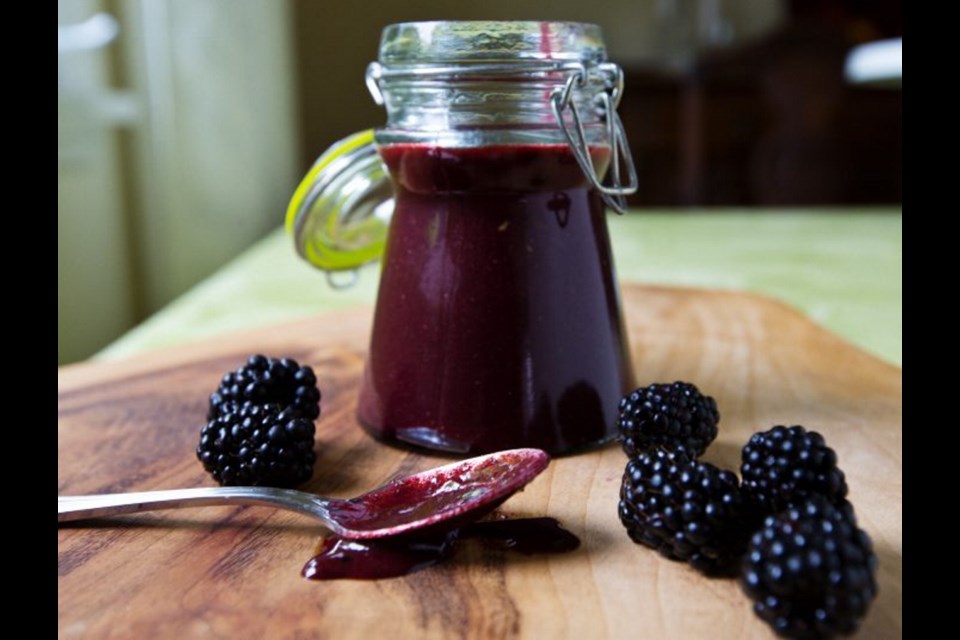 Dear Eric: Wondering about the use of cooking oils, specifically olive, avocado, grapeseed and canola oil. They are the main ones I have in my kitchen and would appreciate information on how best to use them. Claire Jackson
Dear Eric: Wondering about the use of cooking oils, specifically olive, avocado, grapeseed and canola oil. They are the main ones I have in my kitchen and would appreciate information on how best to use them. Claire Jackson
Dear Claire: Below is usage information for the oils you listed. All are high in monounsaturated fats, considered a good fat that studies have shown may help reduce the risk of heart and other diseases.
Avocado oil: Is extracted from avocados and has a delicate, almost buttery flavour. It can be pricier than other oils, but the reward for stocking it will be its versatility.
Use it in salads, salad dressings and marinades, for such things as chicken, vegetables and seafood. The best quality cold-pressed avocado oils can also be used as a “finishing” oil or as a dip. It’s an ingredient you would drizzle onto food, such as grilled fish, just before serving or use to dip crusty bread into.
Avocado oil has a very high smoke point, the temperature at which you can heat it to before it burns. It’s about 500 F, which makes this oil suitable for such things as sautéing, frying and searing.
Canola oil: The word, according to canolainfo.org, the stakeholders website that provides information about this oil, is a contraction of “Canadian” and “ola,” which means oil. The canola plant that yields this oil was developed in the early 1970s. During that process, the levels of erucic acid and glucosinolates found in its parent rapeseed plant were significantly reduced.
About 80 per cent of the canola grown in Canada is sown from genetically modified seed altered to make it tolerant to herbicides, such as RoundUp.
This must not be a concern to many, because oil made from GMO canola in multi billion-dollar business. If it is a concern, though, you can, at a premium, buy GMO-free organic canola oil.
Neutral-tasting canola oil is an all-purpose product that can be used for all sorts of food preparations, such as salads, dressings, things you deep fry, sear or sauté. It’s also used a lot in baked goods.
Grapeseed oil: It’s extracted from the grape seeds, a useful way to use up a byproduct from the winemaking industry. According to The New Food Lovers Companion, some grapeseed oils do have a slight grapey taste, but most, because of how they are heat processed, don’t have much taste at all. Because of that light, clean taste, grapeseed oil is suitable for baked goods, salads, salad dressings, homemade mayonnaise and as a base oil that you flavour with herbs and spices.
Grapeseed oil has a moderately high smoke point, about 420 F, which also makes it suitable for sautéing.
Olive oil: There are three main-styles of olive oil — extra virgin, pure olive oil and pomace olive oil.
Extra virgin is considered the top grade and is made by cold-pressing olives to extract their oil. Because of the cool conditions, the oil retains its natural colour, aroma and taste.
This flavourful oil is good for salad dressings, homemade mayonnaise, aioli, dipping bread in or drizzling on such foods as pasta, seafood, grilled vegetables and crostini. You can use extra virgin olive oil for cooking but, once heated, its fine flavour quickly dissipates.
Products labelled pure olive oil, or simply olive oil, are made with olives that are heat processed to extract the oil. During that process the oil’s aroma and taste is lost. Because of that, a bit of extra virgin olive oil is often added to this type of oil to help replace some of that lost aroma and taste.
Pomace olive oil is the lowest grade and is made by heat extracting oil from the pulp and stones leftover from producing other types of olive oil, usually with the aid of solvents.
Pure olive oil and pomace olive oil are considered all-purpose oils, good for cold and hot preparations.
Blackberry Tarragon Vinaigrette
In-season blackberries blended, strained and used to make a dark and tangy dressing for salad greens and other items you toss in, such as goat cheese and nuts.
Preparation time: 10 minutes
Cooking time: none
Makes: 1 cup
1 1/2 cups fresh blackberries
3 Tbsp cider or raspberry vinegar
1/3 cup extra virgin or pure olive oil, grapeseed oil, or canola oil
2 tsp Dijon mustard
1 tsp dried tarragon
1 tsp honey, or to taste
• salt and freshly ground black pepper, to taste
Place the blackberries and vinegar in a food processor, blender or in the cup that came with your immersion (hand) blender. Puree the blackberries until smooth. Set a fine sieve over a bowl. Pour the blackberry mixture into the sieve. Whisk and push the blackberry mixture through the sieve until all that’s left in the sieve are the seeds from the blackberries. Discard the seeds, spoon the strained blackberry mixture into a sealable jar. Add the remaining ingredients and shake to combine.
Refrigerate vinaigrette until needed. You can store it up to a week.
Roasted Sockeye Salmon Fillets with Shrimp
Yummy in-season salmon and shrimp, flavoured with oil, oregano, garlic and lemon, and roasted to a tasty conclusion.
Preparation time: 10 minutes
Cooking time: 13-15 minutes
Makes: 4 servings
4 (6 oz.) sockeye salmon fillets
3 Tbsp extra virgin or pure olive oil, or avocado oil
2 Tbsp fresh lemon juice
1 small to medium garlic clove, minced
1 Tbsp chopped fresh oregano
• salt and freshly ground pepper to taste
1/4-1/3 lb. small, cooked salad shrimp
Preheat oven to 375 F. Line a nine- by 13-inch baking dish with parchment paper. Set the salmon in the baking dish. Combine the oil, lemon juice, garlic and oregano in a bowl, and then spoon over the fish. Season the fish with salt and pepper.
Roast the salmon five minutes, and then top each fillet with an equal amount of the shrimp. Roast eight to 10 minutes more, or until the fish is cooked through. Divide the salmon among four plates. Spoon the pan juices over top the fish and serve.
Eric Akis is the author of the hardcover book Everyone Can Cook Everything. His columns appear in the Life section Wednesday and Sunday. eakis@timescolonist.com



